#history of malaysia
Explore tagged Tumblr posts
Text

"Losing Hearts and Minds is an innovative blend of social and military history that examines how race, gender, and ethnic identities shaped the British army in a colonial setting. This deeply researched, beautifully written book brings to life the tensions within a multi-cultural military, when lines blurred between soldiers and civilians, and nationalist loyalties clashed with imperial subjecthood."
#uwlibraries#history books#history of malaysia#history of singapore#british history#colonial history
6 notes
·
View notes
Text

They’re agile runners, they’re great divers…and they haven’t changed much in more than 20 million years! Though Malayan tapirs (Tapirus indicus) may be friend-shaped, resist the urge to boop their snoots: Adults can weigh more than 1,000 lbs (450 kg) and can run at speeds of up to 29.8 mph (48 km/h). They use their unique nose, called a proboscis, like a snorkel when submerged in water. Found in parts of southeastern Asia, these herbivores use a wide range of vocalizations, including hiccup-like sounds, to communicate.
Photo: Andy Hay, CC BY 2.0, Wikimedia Commons
#science#nature#natural history#animals#fact of the day#did you know#tapir#animal facts#malaysia#cool animals
700 notes
·
View notes
Text
In the estate, Thangamaal, despite not knowing how to read or write, raised her son, Neelavanan, with stories from the Mahabaratham, Ramayanam, as well as Tamil Bhakti songs. In spite of her devotion towards Hinduism, she was a woman who liked eating beef, a meat often seen as ‘impure’ by caste-Hindus.
“Once, my mother bought beef from the town, and when the neighbours asked her what she was cooking, she said mutton. When I asked my akka (sister) why amma (mother) said that, she told me that people [Hindus] who pray can’t eat beef,” recalled Neelavanan.
As Neelavanan grew up, he understood that Hindu religiosity surrounding beef was a weapon against Dalits who consume it. “People around me eat mutton, chicken, water monitors, pork—they eat everything,” he said. “But when it comes to beef, they say that it is god. They brand [Hindus] who eat beef as coming from a certain caste. We are buying [beef] with our own money; we did not steal or beg for it. Yes, I eat beef, so what?”
Ove time, however, the culture of eating beef has deliberately declined among Dalits in Malaysia as a way to escape casteism and adapt to caste-Hindu practices. This shift can be seen in Neelavanan’s own family, where his siblings and relatives refuse to eat beef and even scrutinise him for his beef-eating habits.
248 notes
·
View notes
Text
Really random, but can anyone point to books, movies, art, or any other resources about WW2 that come from countries that were colonized by Japan?
#Japan#Philippines#South korea#Korea#China#Malaysia#Singapore#History#Taiwan#Okinawa#If people could signal boost/reblog I'd appreciate it#Asking for a student I tutor#Indonesia
114 notes
·
View notes
Text





Hokkien architecture, or Minnan architecture 闽南传统建筑 is the architectural style of the Hokkien people, a Han Chinese sub-group who make up the majority in the province of Fujian and Taiwan, with a significant community in Singapore and Malaysia.
There are several features that are unique to Hokkien buildings, making many traditional buildings in Fujian and Taiwan visually distinctive from those outside the region. With the main feature being the red bricks, followed by the wall and floor tiles.





#china#🇨🇳#chinese#Fujian#Fujian province#chinese heritage#chinese culture#chinese architecture#Taiwan#Singapore#Malaysia#hokkien#hokkien people#minnan architecture#Fujian architecture#Hokkien architecture#courtyards#east china#Eastern China#regional architecture#coastal China#south China#Southern China#sino#chinese history#people’s republic of china#republic of China#chinese courtyards#courtyard houses#minnan
85 notes
·
View notes
Text

Setting up camp in a safe open field. Malaysia
1967
#vintage camping#campfire light#malaysia#malaya#history#camping#road trips#hiking#travel#outdoors#get out there#1960s
56 notes
·
View notes
Text



20231212 - Nature x Structure
there is a block of colonial buildings within the old town section of Ipoh where nature and man-made structure convenes in natural harmony, beguiling the visitor and drawing them in for a quick look see. wander the short alleyway and marvel at the splendor of this symmetry and then make your way to the nearest giftshop across the street, or have a cup of coffee at the old coffeeshop right around the corner.
#canon eos 6d#photography#original photographers#photographers on tumblr#city#nature#architecture#architecture photography#traditional#history#Ipoh#Perak#Malaysia
21 notes
·
View notes
Text
Psychological Warfare of the Malayan Emergency by Herbert A. Friedman (Ret.)
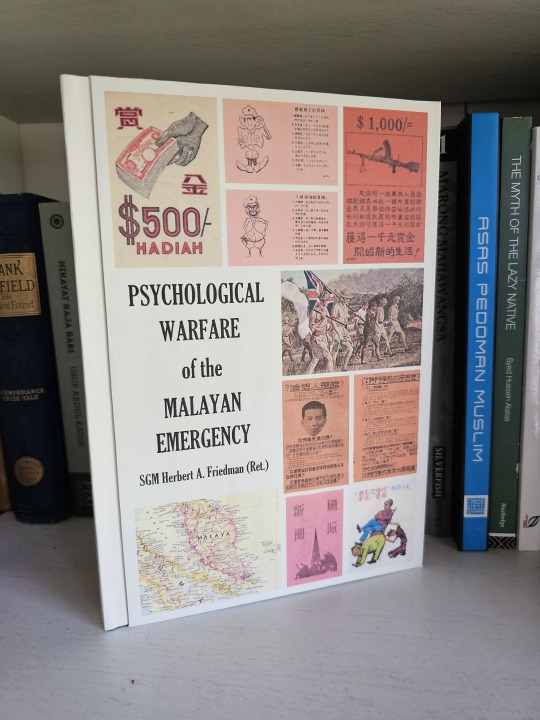
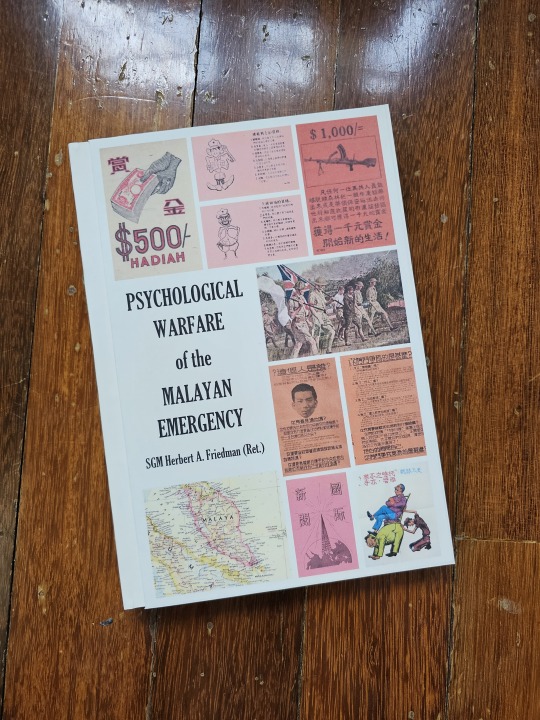
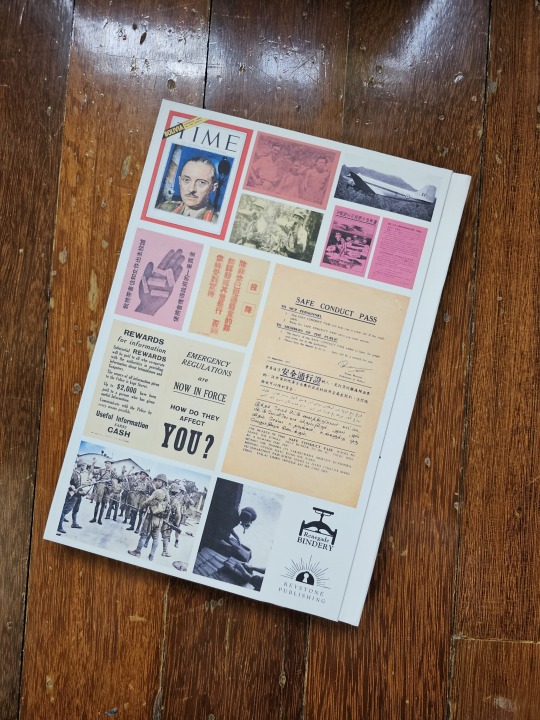
Have you ever been taught a version of history at school that seems weirdly simplistic? And then years later, you find more evidence that shows the whole affair was a giant, complicated mess?
Guess what I learned over the past few months about the Malayan Emergency.
For context, the Malayan Emergency was a conflict that raged in the British colony of Malaya from 1948 until the 1960s between communist forces and the British government, later continued by the independent Malayan government. The government forces won, but any school teachings of the conflict was presented in a manner that simplified the complex (and often, grey) nature of the Emergency.
I knew since then that a lot of truths were hidden away, but I didn't realize that there was a psychological aspect to the Emergency until I stumbled upon this webpage by a retired military officer about it. Given the length of the information provided and that it's the only one of it's kind — and therefore at risk of information loss if deleted, I sought to bookbind it. Pictures and all.
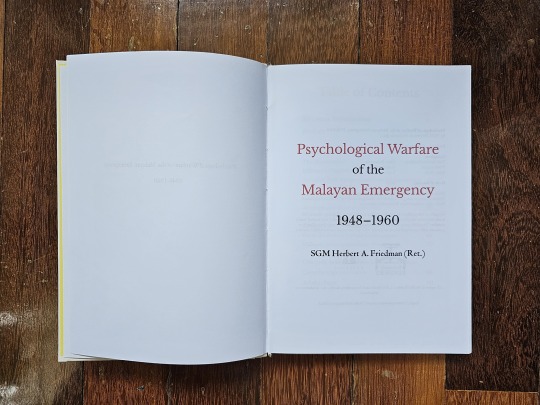
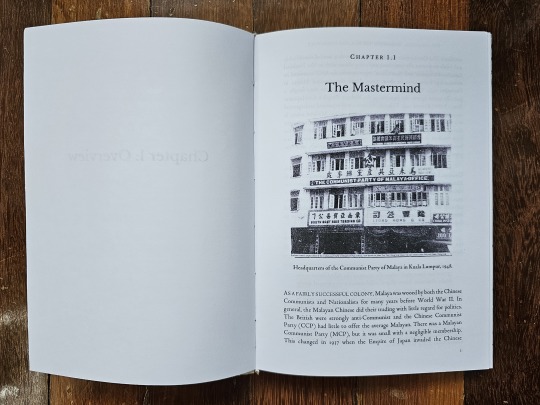
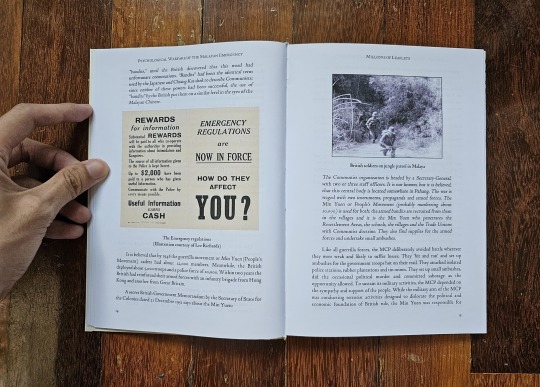
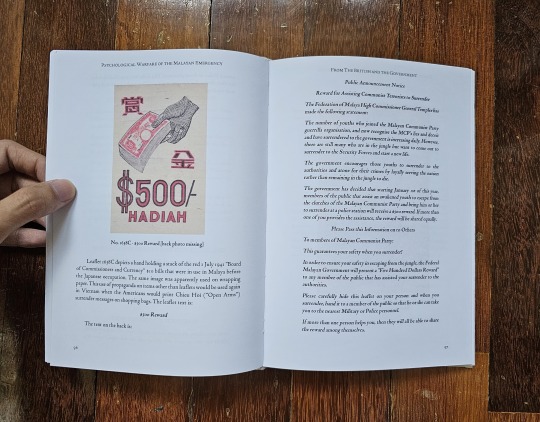
Given the amount of information contained and the sheer number of images, this project took about a month!
I had to divide the continuous stream of information in the webpage into readable chapters.
Then, I had to layout the images with the text, which was actually harder than expected — the size of the image could shift relevant text into the following pages, so it was a process of balancing image size to textual placement.
In-between that was the regular work of typesetting, but also of formatting quotes and examples, of which there were a lot.
And then there were pages that required special attention. For example, these pages:
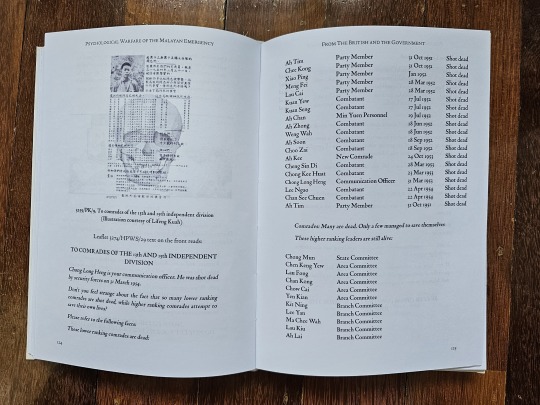
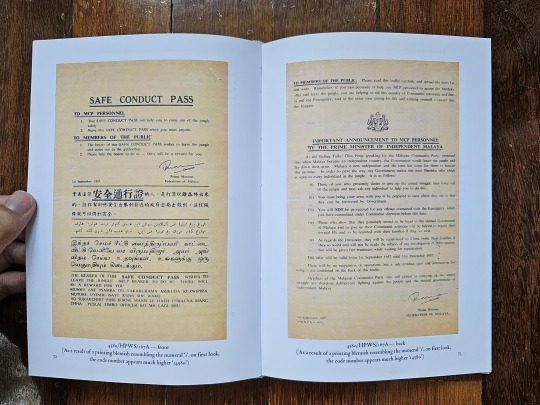
The pages on the right was relatively simple — a double-sided leaflet that could be showcased in a double-page spread, with contextual information in the following pages.
On the left however, to create the list of dead / living people, I had to finagle a table in Microsoft Word and constantly adjust the cell size to make the long names and positions fit. The whole endeavor was an exercise in patience.
Leafing through the pages, there are some parts I am annoyed with, such as pictures on the right page with their annotated message in the following left page. But as it is, I'm just glad this is done.
Special thanks to SGM Herbert A. Friedman (Ret.) for compiling this information that astonished me to create this bookbind.
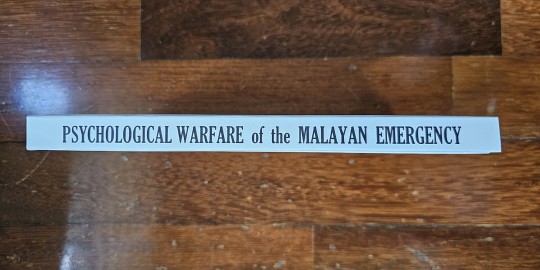
#history#Malaya#Malaysia#bookbinding#fanbinding#non fiction#Malayan Emergency#warfare#psychological warfare#my bookbinds#conflict
124 notes
·
View notes
Text




Kingdom of Singapura
A Malay Hindu-Buddhist nation that was thought to have been established and founded by the Fabled Raja Sang Nila Utama, a Prince from what is now Palembang, Indonesia.
The Kingdom lasted from 1299 to 1398, his Skin Dark Red symbolising his origin as a Simple Settlement and former Vassal to the Majaphait Empire known as Temasek. Lion ears and a Swordfish Tail, symbolizing the Lion that the Raja saw, the Merlion and the Swordfish invasion myth.
The Clothes and accessories he wears represent his past and his conflicts, the Crown he wears is woven by Leaf fronds and Tree bark, referencing the Orang Asli of East Malaysia and Singapore.
I commissioned this piece from hshmingon on Instagram!
Go support them!
#art#commissioned art#countryhumans#singapore#countryhumans singapore#Kingdom of Singapura#pre colonial period#medieval fantasy#medieval history#historical fantasy#majapahit#ayutthaya#malaysia#orang asli
15 notes
·
View notes
Text
Malaysia's Independence
What does 'Les Misérables' mean to you?
The clips shown below is of the declaration of independence in 1957, marked with the nation's final blaring of 'God Save the Queen' as the British flag is lowered. Merdeka ('independence') is called out seven times. British Malaya has ended.
The later clips show the anniversary of the celebration of the initial year of independence after a long, long history of colonisations.
After the ethnic divide the British enforced in order to maintain order and power, Malaysia unites its citizens; and thus the ending quote, 'There's no Chinese, no Malay, No Indian... Just Malaysians.' appears.
To celebrate the independence day, the themes of ethnic unity is emphasised. Through unity, they achieved independence and liberation away from several hundreds of years (446 years, 1511-1957) of colonisation from multiple global powers.
youtube
Under British colonial rule (1786-1941), Malaya was not merely a colony but a key part of the British Empire's economic engine, with the British exploiting the country’s natural resources, particularly tin and rubber, and using its strategic location for global trade.
The British officials made sure that the traditional class divisions should be maintained. "Hence, most economic development was left to Chinese and Indian immigrants, as long as it served long-term colonial interests."
The British introduced a divide-and-rule strategy that entrenched ethnic divisions, particularly between the Malays, Chinese, and Indians, creating a fragmented society that served British interests, and of which was constructed on race and occupation.
The British colonial administration’s reluctance to address the needs and aspirations of the local population, preferred instead to maintain control through appointed elites and limited self-rule.
If we remember from the British rule of India, the class divisions they encouraged and maintained was based on religion. This later invited social and economic division, and ultimately created India and Pakistan to become two countries from the year of their independence.
The British had the habit of ruling like that. Malaysia got lucky, and they didn't go through this type of partition.
Immediately after WWII, Malaysians were fighting off the Japanese in the British backed the Chinese-Malysians with weapons, in which the communists also turned their backs and pointed the weapons at the British during this period.
The Malayan Emergency (1948–1960), a brutal conflict primarily with the Malayan Communist Party (MCP), was a direct consequence of British mismanagement and their failure to grant the right of to freely determine their own political status and pursue their economic, social, and cultural development without interference from foreign powers or colonial rulers.
The British response to the communist insurgency, which included mass incarcerations, punitive actions, and the establishment of a system that disenfranchised much of the local population, only heightened the desire for self-rule.
Despite the difficult path to independence, marked by years of struggle and frustration, the establishment of the Alliance Party (comprising UMNO, MCA, and MIC) in 1951 was a pivotal moment, showing the potential for cooperation across ethnic lines.
The Tunku Abdul Rahman-led Alliance successfully pressured the British to concede political power, yet equality was still out of reach.
The British, while eventually agreeing to grant independence in 1957, had no real intention of relinquishing control easily, and the agreements made were more about preserving British interests and maintaining influence.
The final negotiations in London in 1956, which led to the London Agreement, were not entirely driven by the aspirations of the local population, but rather by the pragmatic need for the British to stabilise the region amidst the larger decolonisation movements taking place around the world; as anti-colonial rebellious sentiments were being quickened as the news of Ghandi were spreading.
Ultimately, the independence celebrations of 31 August 1957 marked the end of formal colonial rule.
youtube
The Merdeka Day celebrations focuses on unity and democratic freedom which had been forced on them whilst the colonial power tried to manipulate its citizens to fight against one another.
This period of time is characterised by the complex negotiations between a colonial power and a fragmented, yet resilient, population seeking liberation, unity, and equality.
#Youtube#protests#independence#malaysia#english#malay#merdeka#les mis#It's quite literally 4am here!! I spent some time researching#but I am also tired#so please tell me if I got anything wrong#and I'll speed to the edit button!!#history#british colonialism#lyric rewrite#research
11 notes
·
View notes
Text
Daendels in Malay Literature
Daendels's performance was so recent, not even ten years ago, that it was in everyone's memory, and the Great Lord had made such a tremendous and bewildering impression on the minds, that his word was considered as that of the great potentates of old! (...)
In Batavian color this processing is even more intense; when the indignant prince of Tjirebon says: djangan toean ambil pergoesar ada jang kita mace bilang sama toean dari itoe orang goenoeng", here the marshal answers: loe orang Tjirebon makan oedang trasi mengapa meng adjar goea orang jang makan daging dan minjak sapi". (...)
(...) while Daendels used to say: in applying justice one must take into account the condition of the people. If a prince is unjust and the people therefore do not want to stay in the country, he must become just; but if he is unjust without the country suffering, then he need not be just, because if he is very just, his severity does not have much effect". This cannot be correct, as appears from all kinds of sources, including the Qur'an. How then to explain this incorrectness in such a statesman? Well, because he had a different religion than we do!
(...) As much as he admires him, and even makes efforts to reconcile his statements with the Qur’an and tradition, in one major regard he abhors him, for to him, the author, Daendels is and remains the kafir (...)
I finally found this after a long time 😭 I was so excited to read it but sadly the chapter is mostly talking abt many local prince or even some islamic figures (?) I'm not sure either lol. Managed to fish out some of interesting stuff tho, the second point of them talking in Java language or old Indonesian basically said smth abt Daendels telling them that they shouldn't teach him what to do from my opinion 🧐 Also, I spotted another potential Daendels quote from the third point 👀 Overall, I think this is a very cool discussion and tbh I'd like to hear y'all thoughts abt this if u guys have one ofc. Anyway, that's all for now, thank you n have a great day, stay safe 🌙
#daendels#napoleonic era#history#napoleonic wars#dutch#dutch history#governor general#dutch east indies#analysis#malaysia#literature
6 notes
·
View notes
Text
Others: If you were asked to write for the 5th Valkyria Chrinicles game, how would you write it?
Me: As a mixture of the Burma, New Guinea, and Borneo campaign.
Others: … What?
Me: Well, the Valkyria chronicles franchise has always liked toying with some degree of moral ambiguity, with an empire that is clearly in the wrong, but the side you are fighting for, while better, still has glaring flaws. Furthermore, the fourth game implied and talked about the idea that nations within the Federation has colonies, and while I am skeptical of how much of what the Imperial soldier stating that claim is stating established facts or state propaganda, that could be an angle to explore plot wise.
Think about it, perhaps the Empire launches a naval invasion to try and take over these resource rich colonies, and are banking on creating a narrative that they are liberators to the indigenous population, just like how the Japanese did during their initial pushes into Southeast Asia.
This could also mean a new perspective of what I shall dub for the sake of this post, the “Commonwealth”, who draws inspiration from mainly British colonial forces and Commonwealth, more specifically, Indian and Australian forces, with a heavy side of Gurkhas. Where you have to manage and combat this narrative, between members of your squad that are descendants of Edinburgh Federation settlers (Australians), indigenous peoples (Indians, Indonesians, Malaysians, and Nepali Gurkhas) and those actually from the Federation (British).
Not to mention, this could also be interesting to explore in the context of why they are siding with the Federation. Those actually from the Federation might view the conflict through the lens of ideology, and preserving the Empire Federation. Meanwhile the settlers might not care about the broader Federation, but they do care about their home being threatened. Finally those who are indigenous might have negative feelings about their current Colonial overlords, but be even more skeptical to the Imperial claims, or maybe even be exposed to the actual Imperial treatment that is far worse than anything the Federation have done.
And the Darscen can be explored in an interesting lens, as the Federation-native members might have the most amount of anti-Darscen soldiers, while settlers might still talk about them using offensive terms, but otherwise treats them better due to the need for the skill sets often associated with Darscens being particularly useful and valuable, while the indigenous members don’t have the context for the hate, and as far as they’re concerned, it’s someone else’s problem.
Gameplay-wise, the door is open to a lot of creativity. Jungle warfare can open the door to a lot of new mechanics and tactical situations. Maps could be very claustrophobic due to the thick jungle. Closer engagements could lead to having classes be more flexible, such as the inclusion of melee, bonus equipment like flares for the Scout class that helps to boost accuracy within the zone, or even new skills like engineers being able to build emplaced weapons.
Then there are the tanks. Tanks could play an interesting role, as tanks were used in far more limited numbers and roles compared to the European fronts, but I can easily see an interesting exploration in this world about smaller more compact tanks that function like anti-infantry roles, like how the Australians use Matilda tanks in the liberation of Borneo.
I could also see the dropping of the lancer class (iconic as it is), but the adoption of a new class that I would dub the “point man”, who would act as a mix of the scout and the shock class, having high movement range, but armed with more short ranged weapons like submachine guns and introducing shotguns to the series.
And the enemy can be interesting as well, with perhaps less use of the traditional image of the Imperial forces within the series, but instead more like naval troops and sailors and marines, perhaps their own colonial forces, and maybe even native people who side with the Imperials, deeming the Federation too irredeemable.
Finally, aesthetic. I think people are too obsessed with either the German, Soviet and/or American WWII aesthetic, but I personally find British commonwealth and colonial forces too be an awesome aesthetic, and also because I believe people often overlook the actions and achievements of British imperial forces.
Personally, I think people might be intrigued with playing characters inspired and based off Sikh, Malay, Gurkhas, Australians, and even British forces. Slouches hats, Bren guns, Owen guns, and Kukri knives, honestly it would be cool to see and use.
Besides, what could be cooler than siccing a fantasy world equivalent of a Gurkha or Aussie on an unsuspecting Imperial?
Others:… Go back to having the shower thoughts be about Genshin.


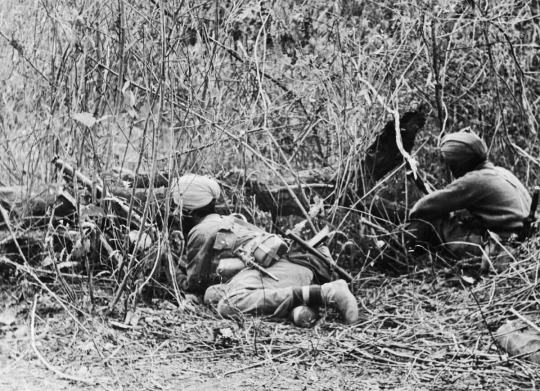
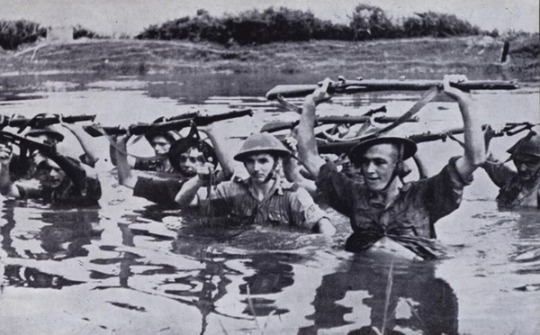
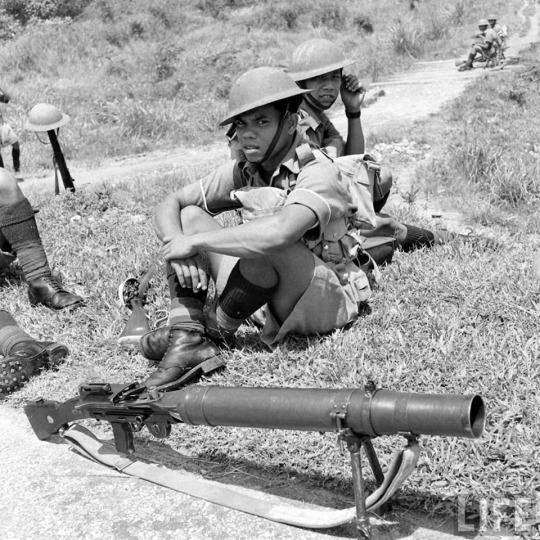

Images from top left, clockwise: Australians during the Borneo campaign; Gurkha, unknown location; British soldiers crossing a river during the Burma campaign; Australian Matilda Tanks during the Borneo Campaign; Soldier of the Malay Regiment; Indian Sikh soldiers, Burma campaign
#history#world building#valkyria chronicles#world war second#world war ii#wwii#wwii era#british empire#Australia#India#burma#Burma campaign#Borneo campaign#borneo#Gurkha#2 AIF#Matilda tanks#british army#indian army#australian imperial force#malaysia#Malay regiment#long post#long reads#shower thinking#shower thoughts#world war 2 aesthetic#history aesthetic#aesthetic
8 notes
·
View notes
Text

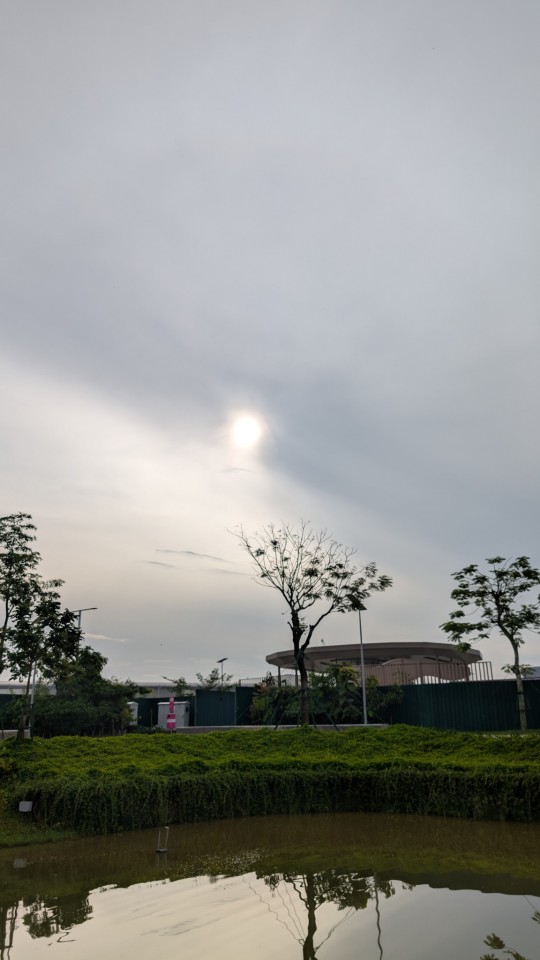

As I watch the sun #### the ocean
#godspeed you! black emperor#travel#photography#google pixel#post rock#art#mogwai#nature#history#movies#sun#malaysia#boyhitscar
7 notes
·
View notes
Text




Western Cemetery, George Town, Malaysia.
#cemetery#graveyard#gravestones#malaysia#asian#george town#penang#western#tropical#travel#graves#victorian#history#colonial era#colonial history#british history#english history#malaysian history
4 notes
·
View notes
Text




Examples of Sino-Portuguese architecture in Singapore and Malaysia.
This hybrid style incorporating elements of both Chinese and Portuguese architectural styles can be seen in Southern China (Guangdong, Hainan, Macao, etc) and Maritime Southeast Asia, with most prominently conserved and maintained examples being in historically Chinese-populated areas in the Malay Peninsula and Singapore.
Sino-Portuguese tiles and patterns:
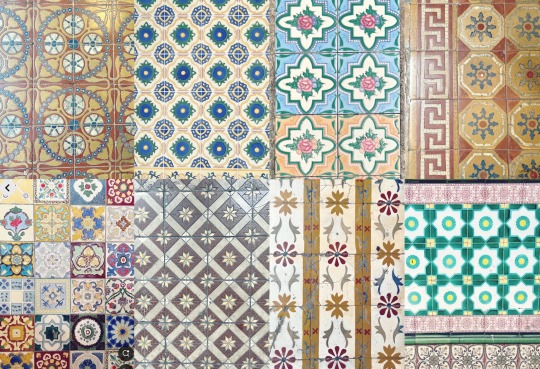
#china#chinese heritage#east asia#chinese culture#chinese#architecture#people’s republic of china#chinese history#Southeast Asia#Guangdong#Hainan#Macau#🇨🇳#sino#Thailand#Singapore#Malaysia#colonial architecture#🇹🇭#🇸🇬#🇲🇾#Peranakan#Sino-Portuguese architecture#Chinese-Portuguese architecture#Chinese-European architecture#courtyards#courtyard houses#asean#Portugal#republic of China
43 notes
·
View notes
Text

Nirnama oleh AsyrafAzulia
#Asyrafazulia#artist#artists on tumblr#malaysia#artwork#19th century art#art history#digital drawing#digital painting#digital art#digital illustration#illustration#ilustrasi#illustrator#pirate#one piece#anime#animation#malay#bahasa melayu#bahasa indonesia#melaka#handsome#perempuan#gadismelayu#ship art#Asia#art#japan#malaysian art
8 notes
·
View notes